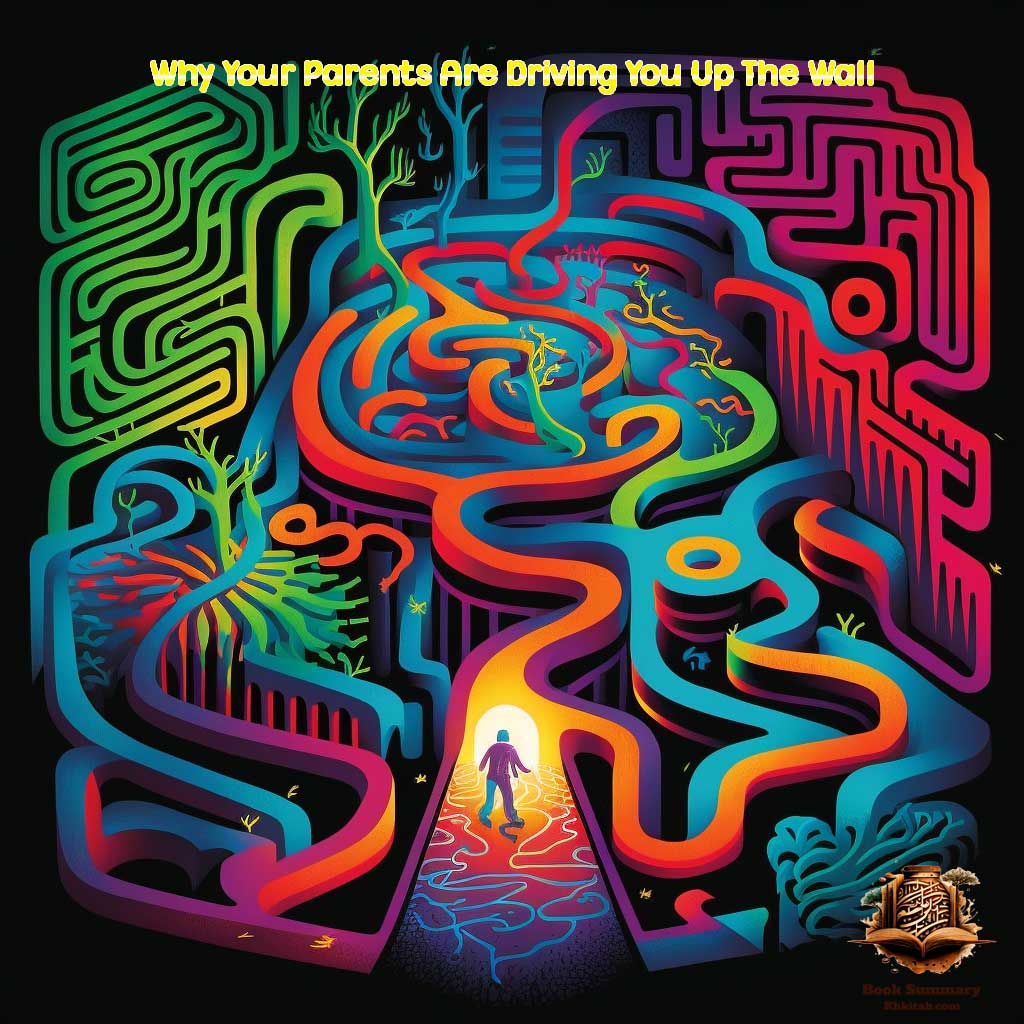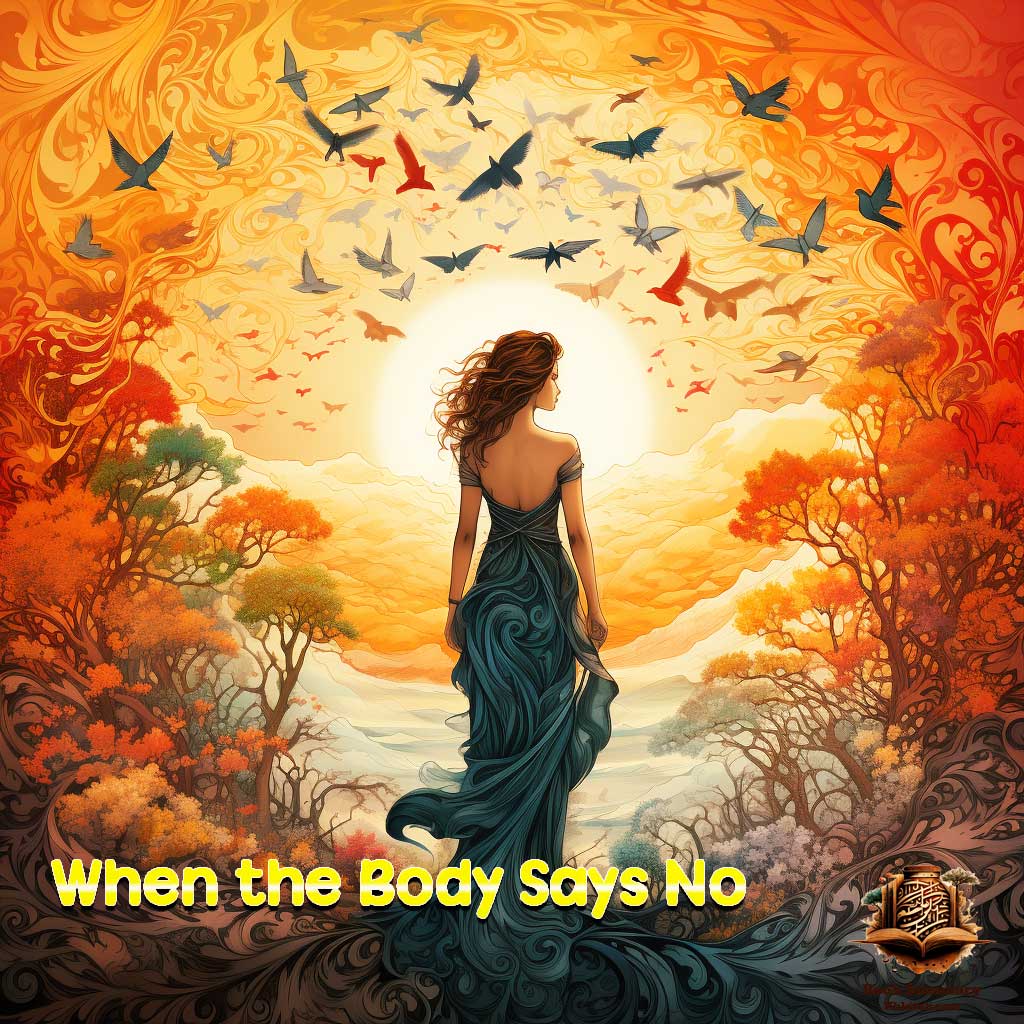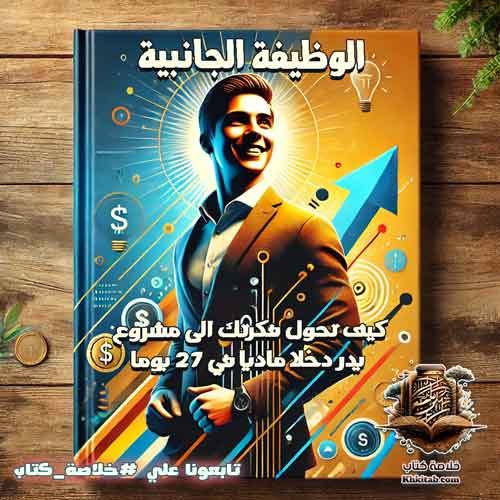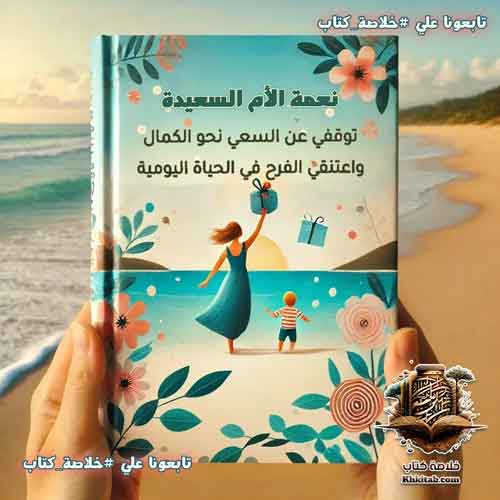The Art of Happiness Book Summary

In our contemporary world, characterized by its fast pace and the daily pressures individuals face, happiness often seems like a distant mirage. Despite these challenges, the relentless pursuit of happiness and self-satisfaction remains the ultimate quest for many. Within this context, the book “The Art of Happiness ” emerges, offering profound insights into this topic.
This work, regarded as an essential reference in understanding happiness, reflects the results of interviews with the Dalai Lama. It delves into concepts and ideas about happiness from a unique and distinguished perspective. Not merely as a philosophy, but as a practical life process that can be applied and experienced.
In this article, we will present an expanded overview of this book, exploring the insights it offers and how these insights can assist individuals in achieving happiness in their daily lives. Furthermore, we’ll delve into how one can overcome obstacles and challenges that may stand in the way of realizing this happiness. This book is not merely a theoretical reference; it serves as a practical roadmap guiding readers towards a life filled with greater happiness and contentment.
إقرأ أيضا:Too Nice for Your Own Good: Balancing Generosity with Self-PreservationTable of Contents
How Does “The Art of Happiness” Define the True Nature of Happiness?
In the modern era, where distractions are endless and the quest for fulfillment is omnipresent, understanding the true nature of happiness has never been more crucial. “The Art of Happiness” by the Dalai Lama and Howard C. Cutler dives deep into this very essence, challenging and reshaping our contemporary notions of joy and contentment.
Central to the book is the exploration of the nature of happiness itself. Rather than presenting it as a fleeting emotion or a mere byproduct of success, the text delves into happiness as an innate human capability. It poses the question: What does happiness genuinely mean to us? It’s intriguing how our perceptions of happiness, often influenced by societal norms and materialistic pursuits, can drift away from its authentic essence. The book suggests that true happiness is neither contingent on external circumstances nor bound by fleeting moments of pleasure or success.
“The Art of Happiness” emphasizes the idea that real happiness is an inner state of being. It’s a continuous journey of understanding oneself and evolving our perceptions. By distinguishing between temporary pleasures and long-lasting contentment, the book aids readers in distinguishing between what feels good momentarily and what brings enduring peace and joy.
Drawing from ancient Buddhist wisdom and contemporary psychological insights, “The Art of Happiness” offers a fresh perspective on what it means to be truly happy. By understanding the core nature of happiness, we can navigate life with a clearer sense of purpose and direction, striving not just for momentary joys but for deeper, lasting contentment.
What are the Primary Sources of Happiness as Expounded in “The Art of Happiness”?
In an age where material pursuits and digital distractions dominate, discerning the genuine sources of happiness becomes a crucial endeavor. “The Art of Happiness” by the Dalai Lama and Howard C. Cutler meticulously delves into this essential quest, unraveling the layers that make up our perception of joy and contentment.
A cardinal tenet laid out in the book is that happiness isn’t merely a consequence of external circumstances. While societal achievements and possessions can provide ephemeral moments of pleasure, they often prove insufficient in granting lasting happiness. These transient joys, according to the book, often overshadow the profound, enduring sources of happiness that lie within us.
The text brings to light the immense power of internal factors in shaping our sense of well-being. Core values, self-awareness, compassion, empathy, and personal growth are accentuated as invaluable pillars of lasting happiness. By fostering these inner attributes, one can achieve a deep-seated contentment, irrespective of external vicissitudes.
Conversely, the book doesn’t negate the influence of external sources. Relationships, environment, and physical well-being undoubtedly play roles in shaping our happiness. However, the Dalai Lama and Cutler stress the importance of a balanced perspective, suggesting that while external factors can enhance our life quality, it’s the inner sources that predominantly fortify our foundational happiness.
In conclusion, “The Art of Happiness” offers readers a holistic approach to happiness. By understanding and harmonizing both internal and external elements, one can craft a life of genuine joy, transcending the fleeting pleasures that often masquerade as true contentment.
Self-development – Book Summary (khkitab.com)
How Does “The Art of Happiness” Illuminate the Intricate Relationship Between Pain and Pleasure?
One of the prevailing questions in human philosophy and psychology is the relationship between pain and pleasure, and how one often paves the way for the other. “The Art of Happiness,” penned by the Dalai Lama and Howard C. Cutler, offers profound insights into this intricate interplay.
Pain, as delineated in the book, is not merely a negative experience to be avoided. Instead, it’s a facet of our existence that carries lessons and potentials for growth. The Dalai Lama emphasizes that challenges and adversities, while initially perceived as sources of distress, often harbor opportunities for personal and spiritual development. Such growth, in turn, can lead to a deeper and more resilient form of happiness.
On the flip side, pleasure, though desirable, is transient. While it undoubtedly adds color and excitement to life, the pursuit of pleasure for its own sake can become a cyclic trap, leaving individuals in perpetual search for the next fleeting joy. Without the depth and understanding that often comes from facing pain, pleasure can sometimes be shallow and short-lived.
Furthermore, the book underscores the concept of empathy, which arises from experiencing pain and the consequent desire to alleviate others’ suffering. This profound sense of compassion and empathy enhances our connections with others, fostering communal happiness and strengthening interpersonal bonds.
In essence, “The Art of Happiness” posits that while pain and pleasure are two contrasting experiences, they are intricately intertwined in the tapestry of human existence. By embracing the lessons pain offers and appreciating the temporary nature of pleasure, one can find a balanced and sustainable path to lasting happiness and understanding.
How Does “The Art of Happiness” Guide Us Through Overcoming the Obstacles of Anger, Hatred, and Jealousy?
Navigating the tumultuous waters of negative emotions is a challenge for many. In “The Art of Happiness,” the Dalai Lama and Howard C. Cutler meticulously delve into strategies and mindsets that can help individuals overcome the overwhelming forces of anger, hatred, and jealousy. This intricate exploration helps readers comprehend not only the nature of these emotions but also practical ways to tackle and transform them.
Anger, as discussed in the book, often arises from unmet expectations or perceived injustices. The Dalai Lama suggests a holistic approach: recognizing the impermanence of the situation and understanding that anger doesn’t benefit the individual in the long run. By cultivating compassion and empathy, one can reduce the intensity of anger and approach conflicts with a more balanced perspective.
Hatred, a more ingrained emotion, is intricately linked with ignorance and lack of understanding. The solution here is the cultivation of wisdom and a broader perspective on the interconnectedness of all beings. When we comprehend the shared human experience and the mutual aspirations for happiness and peace, the feelings of hatred start to dissipate.
Jealousy, another powerful emotion, stems from comparison and the perception of lack. “The Art of Happiness” advises focusing on internal values and self-worth instead of external comparisons. By recognizing our intrinsic value and appreciating the uniqueness of our journey, the grip of jealousy loosens.
In essence, “The Art of Happiness” offers a comprehensive roadmap for understanding and navigating these challenging emotions. By integrating mindfulness, empathy, and a broader perspective, individuals can harness the power to transform their reactions and foster a life filled with genuine peace and contentment.
Our Facebook Page – Book Summary
How does “The Art of Happiness” shed light on transforming suffering into a source of personal growth?
In the ever-evolving world of personal development literature, “The Art of Happiness” stands out as a profound exploration of the human condition. Written as a collaboration between His Holiness the Dalai Lama and psychiatrist Howard C. Cutler, this book delves deeply into one of humanity’s most intriguing dilemmas: how can suffering, an intrinsic part of life, be transformed into an avenue for personal growth?
Suffering, as described in the book, isn’t just about experiencing pain or hardships; it’s about our reaction and relationship to these adversities. The Dalai Lama emphasizes the need to shift our perspective. Instead of viewing challenges as obstacles that hinder our progress, they should be perceived as valuable lessons, enhancing our understanding of life and deepening our empathy for others.
A pivotal point the book underscores is the impermanent nature of life. Recognizing that nothing is permanent, not even our troubles, can liberate us from prolonged agony. It suggests that by embracing the impermanence of life, we can develop resilience, a trait that not only aids in navigating hardships but also facilitates personal growth.
Furthermore, the essence of true happiness, as articulated by the Dalai Lama, is intrinsically tied to our inner world. External circumstances, while influential, are secondary. In the midst of suffering, we are given the chance to introspect, to understand our emotions and thoughts more deeply. This self-awareness can lead to profound personal transformations, enabling individuals to discover an inner wellspring of peace and contentment.
To aid this transformative journey, the book offers practical exercises and meditations, combining ancient Buddhist wisdom with modern psychological insights. The fusion of these two perspectives creates a holistic approach to personal development, helping readers harness the power of suffering as a tool for profound personal growth.
In conclusion, “The Art of Happiness” isn’t just a guide to attaining happiness but a manifesto on how to use the very challenges and pains that seem antithetical to happiness as catalysts for personal enlightenment and growth. It’s a must-read for anyone yearning to understand the deeper dimensions of their own psyche and the transformative power of the human spirit.
How Does “The Art of Happiness” Illuminate the Role of Religion and Spirituality in Achieving Contentment?
In an era where mental and emotional well-being is prioritized, many seek solace and guidance in literature. “The Art of Happiness” by His Holiness the Dalai Lama and Howard Cutler, M.D., stands out as a beacon, especially when addressing the intrinsic link between faith, spirituality, and one’s sense of fulfillment.
Spirituality, as proposed in the book, transcends dogma. It’s an exploration of our internal landscape, a journey that everyone, regardless of religious affiliation, can embark upon. It encompasses our values, beliefs, and the greater purpose we find in life. Religion, on the other hand, offers a structured path to engage with these spiritual pursuits. It provides rituals, teachings, and a community that can guide an individual in their spiritual journey.
One of the primary assertions in “The Art of Happiness” is that true contentment doesn’t solely depend on external circumstances but is significantly influenced by our inner values and perceptions. Here, spirituality plays a pivotal role. It offers tools, such as meditation and introspection, to delve deep into our psyche, recognizing patterns that serve or hinder our happiness. Moreover, the practice of compassion, a core principle in many religions, is highlighted as a key component in achieving a lasting sense of happiness. By developing genuine concern for others’ well-being, we create a sense of interconnectedness, which in turn fosters inner peace.
The Dalai Lama’s perspective, enriched by Buddhist philosophy, is particularly insightful. He introduces the concept of “detachment”, not in the sense of disengagement but as an invitation to experience life fully without being enslaved by our attachments and aversions. This nuanced understanding aligns closely with many spiritual traditions, where true freedom comes from within, unshackled by external desires.
Religion, when approached with an open heart and a critical mind, can be a profound source of comfort. The rituals, scriptures, and community engagement can act as anchors, grounding individuals in times of turbulence. Yet, it’s essential, as “The Art of Happiness” suggests, not to get entangled in the dogma but to use religion as a conduit to foster spiritual growth and, in turn, happiness.
In conclusion, “The Art of Happiness” provides a comprehensive framework, melding age-old spiritual wisdom with contemporary psychological insights, to underscore the importance of both religion and spirituality in cultivating a fulfilling life. It’s an essential read for anyone at the crossroads of faith and personal well-being, seeking to understand the deeper layers of their existence and the profound joy that spirituality can usher in.
How Does “The Art of Happiness” Illuminate the Crucial Role of Human Warmth and Compassion in Achieving Fulfillment?
In a world inundated with transient pleasures and fleeting achievements, “The Art of Happiness” by the Dalai Lama and Howard Cutler emerges as a beacon for those seeking deeper, more lasting contentment. At the heart of this transformative work lies the profound emphasis on human warmth, compassion, and the innate need for interpersonal connections.
- Understanding Empathy: The book delves into empathy not just as a mere emotional reaction but as an active choice to understand and share the feelings of another. By fostering empathy, we shift our focus from self-centeredness, allowing for a more connected experience with those around us. This not only deepens our relationships but also broadens our own emotional landscapes.
- The Power of Kindness: Kindness, as highlighted, isn’t just an act but a way of life. In its essence, kindness is about recognizing the common human experience, where each gesture, no matter how small, has the potential to resonate deeply with someone else, contributing to their happiness as well as our own.
- Human Connection as a Source of Joy: The Art of Happiness underscores the undeniable fact that humans are inherently social beings. We thrive in communities and wither in isolation. Genuine human connections – be it friendships, familial ties, or even brief interactions – are reservoirs of joy. When we actively seek to connect, listen, and share, we cultivate an environment conducive to happiness.
- Compassion as an Antidote to Suffering: While life is replete with challenges, it’s through compassion that we find the strength to support and be supported. By recognizing the suffering in others and wishing to alleviate it, we inadvertently find solace for our own challenges, painting a more holistic picture of happiness that is inclusive and expansive.
In sum, “The Art of Happiness” transcends superficial notions of well-being, delving into the human psyche and the shared experiences that bind us. By championing the values of empathy, kindness, and compassion, it posits that the path to true happiness lies in our ability to connect, understand, and care – not just for ourselves, but for the collective human experience. For those seeking guidance in the realm of emotional and spiritual fulfillment, this work stands as a testament to the enduring power of human warmth and compassion.
How Does “The Art of Happiness” Offer Guidance on Confronting and Transforming Negative Emotions?
In the quest for inner peace, understanding how to address and transform negative emotions is paramount. The insightful book, “The Art of Happiness” by the Dalai Lama and Howard Cutler, provides readers with a profound roadmap on this journey. In our increasingly turbulent world, the strategies and wisdom shared within its pages remain relevant and valuable.
- Recognizing Emotion: Before any transformation can occur, recognition is essential. The book emphasizes the importance of self-awareness, encouraging readers to examine and label their feelings, rather than suppressing them or being overwhelmed.
- Embracing Impermanence: One of the foundational teachings of the book is the concept of impermanence. Emotions, no matter how potent, are transient. By understanding and internalizing this, individuals can avoid getting attached to or consumed by their negative feelings.
- Cultivating Compassion: Compassion, especially self-compassion, is highlighted as a potent antidote to many negative emotions. When we approach ourselves with kindness and understanding, we can better navigate feelings of anger, jealousy, or sadness.
- Mindfulness and Meditation: The Dalai Lama offers meditation as a tool to confront and understand one’s emotions. Mindfulness practices, as explained in the book, help in grounding an individual, allowing them to observe their emotions without judgment.
- Shifting Perspective: Many negative emotions stem from a particular perspective or a set way of thinking. The book suggests that by broadening one’s viewpoint and trying to see things from another’s shoes, emotional responses can change, making room for understanding and empathy.
- Seeking Connection: Isolation often amplifies negative emotions. “The Art of Happiness” underlines the significance of human connection in providing support and understanding. By seeking and offering support, negative emotions can be more easily confronted and processed.
In essence, “The Art of Happiness” provides a holistic approach to handling negative emotions. Through a blend of philosophical insights, practical exercises, and shared wisdom, readers are equipped with tools to face their emotions head-on and find the much-sought-after state of inner peace.
How does “The Art of Happiness” Integrate Buddhist Practices and Modern Psychology to Train the Mind for Greater Happiness?
One of the compelling aspects of “The Art of Happiness” by the Dalai Lama and Howard Cutler is its harmonious blend of ancient Buddhist practices with insights from contemporary psychology. The aim is to provide readers with tangible, effective tools to nurture a happier mindset. Here’s how the book navigates the intricate path to training the mind for happiness:
- The Power of Perspective: The book emphasizes that our perception of reality significantly influences our emotional wellbeing. By altering our perspective, like viewing problems as opportunities, we can shift from distress to personal growth.
- Mindfulness and Meditation: Rooted deeply in Buddhist practices, mindfulness and meditation techniques are heralded for their ability to bring clarity, focus, and a sense of calm. Modern psychology also affirms the many benefits of these practices, from reducing anxiety to boosting cognitive functions.
- Understanding the Nature of Desire: By examining the Buddhist view on the impermanence of life and the relentless nature of desire, we learn that unchecked cravings can lead to suffering. Recognizing the transient nature of pleasures can lead to greater contentment.
- Empathy and Human Connection: Drawing upon both Buddhist teachings and psychological studies, the book underscores the importance of empathy and genuine human connections in nurturing a happier state of mind.
- Acceptance of Suffering: This might sound counterintuitive, but recognizing that suffering is a part of life can be liberating. By accepting challenges and pain as a part of the human experience, and not as personal failures, we pave the way for resilience and personal growth.
- The Role of Positive Habits: Modern psychology showcases the importance of habits in determining our mental well-being. The book offers techniques to cultivate habits like gratitude, kindness, and patience, seamlessly integrating them with the Buddhist principle of creating positive ‘karmic imprints’.
- Interdependence and Altruism: Both Buddhism and psychology recognize the interconnectedness of all beings and the benefits of altruistic behaviors. Acts of kindness, not only elevate others but also boost our own happiness and sense of purpose.
In essence, “The Art of Happiness” offers a roadmap for anyone seeking to intertwine age-old wisdom with modern psychological insights to train the mind towards a lasting state of happiness. It reminds us that happiness is not merely a fleeting emotion, but a skill that can be nurtured and developed over time.
How Does Acknowledging Death Enrich Our Appreciation for Life? Insights from “The Art of Happiness”
In “The Art of Happiness,” His Holiness the Dalai Lama and Howard C. Cutler embark on a poignant discussion about the inevitability of death and how embracing its reality can lead to a deeper sense of gratitude and meaning in life. Grasping the transience of our existence may sound like a grim affair, but its acknowledgement offers multiple avenues to amplify the richness of our life experiences.
- Heightened Awareness of the Present: By accepting that our time is limited, we become more attuned to the present moment. Every conversation, every encounter, and even the simplest of joys become magnified in their importance. Instead of waiting for future events to make us happy, we learn to find happiness in the current moment.
- Deepened Relationships: Recognizing the impermanence of life propels us to cherish our relationships. We become more intentional in our interactions, expressing love, gratitude, and forgiveness more freely, knowing that every moment with our loved ones is precious.
- Clarity in Priorities: Understanding our mortality can lead to a profound reassessment of our priorities. Superficial desires and distractions lose their allure, and we become more focused on pursuits that genuinely enrich our souls and the lives of others.
- Coping Mechanism for Challenges: Life is replete with challenges. By keeping the bigger picture in mind — that our existence is just a brief flash in the grand timeline of the universe — we gain a perspective that helps us navigate hardships with resilience.
- Motivation for Personal Growth: With the knowledge that our time here is limited, there’s a renewed motivation to grow, learn, and experience as much as possible. It’s a call to live passionately and purposefully.
- Spiritual Depth: For many, confronting mortality deepens their spiritual beliefs and practices. It can be a path to explore profound existential questions, leading to a richer spiritual life.
In summary, “The Art of Happiness” underscores the paradoxical idea that by embracing the end, we truly begin to understand the value of life. While society often pushes death to the periphery, avoiding its mention, acknowledging it can be a powerful catalyst for a fuller, more meaningful existence. Through this lens, death isn’t a specter to fear but a teacher guiding us towards a deeper appreciation of our journey.
How Does Embracing Universal Responsibility Elevate Individual Happiness? Insights from “The Art of Happiness”.
The modern world presents an array of challenges and opportunities, all magnifying the significance of interdependence and interconnectedness. “The Art of Happiness,” authored by the Dalai Lama and Howard C. Cutler, delves deeply into the concept of universal responsibility, emphasizing how global thinking can indeed lead to individual contentment. Here’s a detailed exploration of the subject:
- Recognizing Interconnectedness: Our actions, no matter how small, ripple out and affect a larger community. The Dalai Lama elaborates that understanding our role in this vast network enhances our sense of purpose and belonging, vital elements for individual happiness.
- Broadening the Spectrum of Compassion: Embracing universal responsibility naturally expands one’s circle of compassion. This inclusive thinking leads to acts of kindness, not just towards those in our immediate circle but to all beings, further enriching our emotional well-being.
- The Joy of Giving: The philosophy highlights that genuine happiness doesn’t solely stem from personal accomplishments. Offering help, contributing to societal well-being, and partaking in global betterment yield profound contentment.
- Safeguarding Future Generations: Recognizing our universal responsibility means understanding the long-term consequences of our actions. By acting with foresight, we’re not only ensuring a brighter future for succeeding generations but also cultivating a sense of accomplishment and happiness in the present.
- Holistic Wellness: The Dalai Lama asserts that mental peace is closely associated with universal responsibility. When we act with global well-being in mind, it reduces internal conflicts, promoting mental tranquility and thus contributing to overall happiness.
- Fostering Mutual Respect: In the pursuit of understanding the interconnectedness of all beings, individuals often develop a heightened respect for diverse cultures, traditions, and opinions, paving the way for a more harmonious personal environment.
- Empowerment Through Action: A sense of helplessness can be a significant detractor from individual happiness. Understanding our role in the bigger picture and acting upon our universal responsibilities empowers us, giving rise to optimism and purpose.
In summation, “The Art of Happiness” postulates that individual contentment is not an isolated endeavor. By acknowledging and acting upon our universal responsibilities, we create a harmonious balance between personal well-being and global prosperity, ensuring a fulfilling and enriched life experience.
How Can Basic Spiritual Values Cultivate a Contented and Fulfilling Life? Insights from “The Art of Happiness.”
In today’s rapidly changing world, there’s an increasing hunger for genuine happiness. Among the numerous suggestions provided, grounding oneself in basic spiritual values remains a time-tested avenue. “The Art of Happiness” by the Dalai Lama and Howard C. Cutler offers profound insights into this. This article sheds light on how emphasizing values like compassion, patience, tolerance, and forgiveness can serve as sturdy pillars for a contented life.
- The Power of Compassion: Compassion is the genuine desire to see others free from suffering. Rooted deeply in empathy, it’s more than mere sympathy. The Dalai Lama highlights that by nurturing compassion, we not only help others but also experience a sense of inner warmth and contentment, leading to deeper bonds and fulfilling interpersonal relationships.
- Patience: A Shield Against Anger: In the face of challenges or provocations, patience acts as a buffer. It prevents hasty reactions and allows for thoughtful response. By embracing patience, individuals can navigate life’s challenges more gracefully, reducing unnecessary internal conflicts and fostering peace of mind.
- Tolerance: Celebrating Differences: The world is a melting pot of cultures, ideas, and beliefs. Tolerance doesn’t just promote co-existence but enriches our understanding. “The Art of Happiness” underscores that by adopting a tolerant attitude, we open doors to diverse perspectives, leading to personal growth and a richer, more diverse life experience.
- Forgiveness: The Path to Inner Peace: Holding onto resentment is likened to carrying a heavy weight. Forgiveness, as emphasized by the Dalai Lama, is the act of setting down this weight. It’s the conscious decision to release resentment or vengeance, regardless of whether the perceived offender deserves it. Through forgiveness, we free ourselves from the chains of negativity, ensuring emotional well-being.
- Integration into Daily Life: Beyond understanding these values, “The Art of Happiness” suggests actively integrating them into our daily lives. Through consistent practice and reflection, these values become second nature, influencing our thoughts, actions, and interactions.
- Collective Benefits: Embracing basic spiritual values doesn’t only lead to personal contentment. It creates a ripple effect. A community or society grounded in these principles tends to be more harmonious, understanding, and supportive.
In conclusion, while there are myriad paths to happiness, grounding oneself in basic spiritual values offers a holistic and enduring approach. “The Art of Happiness” serves as a reminder that in the maze of modern life, sometimes the most profound contentment comes from embracing timeless, universal values.








